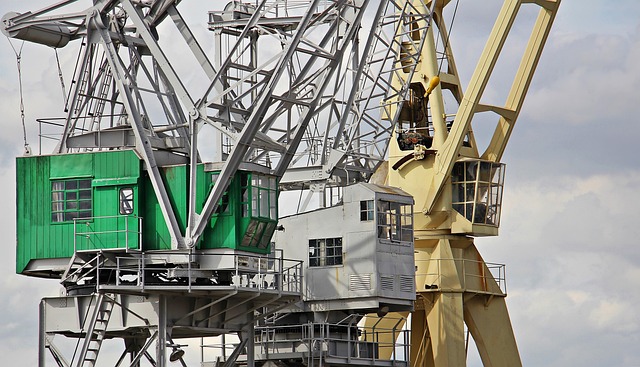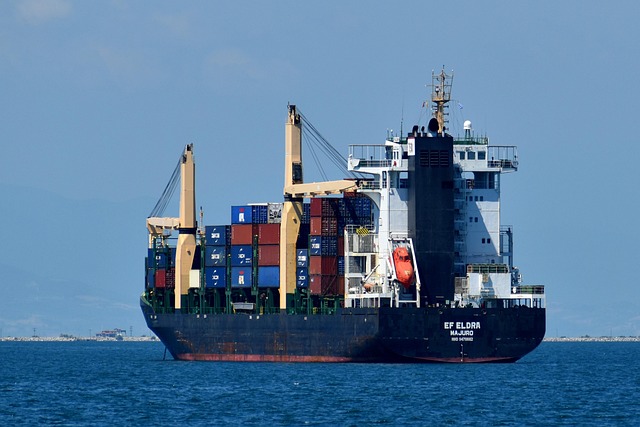Shipping containers have revolutionized on-site storage and logistics with their versatile, cost-effective, and globally standardized solutions. These robust, ISO-dimensioned units cater to both temporary and complex supply chain needs, facilitating efficient cargo transport and fostering innovations in leasing services worldwide. By offering easy customization, seamless transportation, enhanced security, and quick deployment, shipping containers provide businesses with flexible production lines, storage spaces, or workshops, aligning with modern industry dynamics. Proper assessment of storage requirements, selection of container types, sourcing from reliable suppliers, strategic placement, secure loading, and regular maintenance ensure optimal utilization and longevity of these game-changing modular solutions.
The evolution of portable shipping containers has sparked a modern storage revolution, offering flexible on-site solutions that cater to diverse industries. These versatile boxes transform space management by providing adaptable layouts and efficient storage capabilities. From construction sites to event venues, shipping containers are reshaping the way we utilize and optimize space. Dive into this comprehensive guide to explore how these portable marvels can revolutionize your storage needs.
- The Rise of Portable Shipping Containers: A Modern Storage Revolution
- Understanding the Versatility of On-Site Storage Solutions
- How Shipping Containers Offer Flexible Layouts for Various Industries
- Benefits of Utilizing Containerized Storage for Efficient Space Management
- Implementing Portable Shipping Containers: A Step-by-Step Guide
The Rise of Portable Shipping Containers: A Modern Storage Revolution

The rise of portable shipping containers has undeniably revolutionized the storage and logistics landscape. These versatile intermodal shipping containers, once primarily used for efficient sea shipping and cargo transport, have now evolved into dynamic on-site storage solutions. Their robust construction and standard ISO dimensions make them highly adaptable to various industries’ needs. Businesses across sectors are increasingly recognizing the benefits of shipping container storage, from providing temporary extra space to facilitating complex supply chain operations.
The shipping container industry has experienced significant growth due to its ability to offer flexible and cost-effective storage options. With the demand for efficient cargo transportation, shipping containers have become a cornerstone of global logistics. Today, they are not just used for transporting goods but also serve as modular structures that can be quickly deployed, modified, and transported again, making them ideal for temporary or long-term on-site storage. This versatility has sparked innovations in shipping container leasing and rental services, allowing businesses to access these assets without the burden of ownership, further enhancing their adaptability and cost savings.
Understanding the Versatility of On-Site Storage Solutions

On-site storage solutions have evolved significantly with the advent of portable shipping containers. These intermodal shipping containers offer unparalleled versatility and flexibility, catering to a wide range of storage needs across various industries. Whether it’s short-term or long-term storage, these containers provide secure and efficient space for keeping goods safe and organized.
From manufacturing facilities to construction sites and even event venues, shipping container storage has proven to be a game-changer in the logistics industry. With dimensions that align with global standards, such as those set by ISO, integrating them into existing supply chain processes is seamless. This includes their transport using cargo shipping containers, leasing or renting them from reliable suppliers like reputable shipping container manufacturers, and utilizing shipping container transport services for easy movement. The versatility extends to modifications and accessories, allowing businesses to customize the storage units according to specific requirements, thereby enhancing overall shipping container logistics.
How Shipping Containers Offer Flexible Layouts for Various Industries

Shipping containers offer a remarkable level of flexibility in layout and utilisation across various industries. Their modular design allows for easy rearrangement and adaptation to different space requirements, making them suitable for temporary or permanent installations. For instance, in construction sites, shipping containers can be swiftly reconfigured as offices, storage units, or even workshop spaces, catering to the ever-changing needs of construction projects.
This versatility extends to manufacturing facilities, where ISO shipping containers can serve as efficient, portable production lines or assembly areas. Moreover, with options for shipping container rental and leasing, businesses can access these flexible storage solutions on a short-term or long-term basis, aligning perfectly with the dynamic nature of modern industries. The intermodal nature of sea shipping containers, combined with their robust construction, ensures they are suitable for diverse environments, from bustling urban centres to remote sites, making them a reliable choice for many sectors.
Benefits of Utilizing Containerized Storage for Efficient Space Management

Shipping containers offer a game-changing approach to space management, providing businesses with a flexible and efficient storage solution that can adapt to various needs. One of the primary benefits is their ability to maximize utilization of available space on-site. Unlike traditional fixed structures, these containerized storage units can be easily relocated, rearranged, or expanded as required, ensuring optimal use of land and assets. This modularity also facilitates quicker setup and reconfiguration during periods of high demand or facility changes, streamlining operations for businesses.
Furthermore, intermodal shipping containers, such as ISO shipping containers, provide a uniform global standard in terms of dimensions and capacity, simplifying the logistics chain. They can be seamlessly transported using various modes, from sea shipping containers on waterways to cargo shipping containers on land, making them versatile and cost-effective. Shipping container storage solutions also offer enhanced security with robust construction and lockable features, ensuring peace of mind for valuable goods. With a reliable shipping container supplier or manufacturer, businesses can easily source, rent, or lease these units, along with access to necessary accessories and modifications, to meet their specific requirements within the shipping container industry trends.
Implementing Portable Shipping Containers: A Step-by-Step Guide

Implementing portable shipping containers is a straightforward process that offers versatile on-site storage solutions for businesses and individuals alike. Here’s a step-by-step guide to help you navigate this efficient and cost-effective approach:
1. Assess Your Storage Needs: Begin by evaluating the volume of goods or equipment requiring storage. Shipping containers come in various sizes, from 20-foot to 40-foot units, each offering distinct capacity (up to 67 cubic metres) and weight-carrying capabilities. Understanding your needs ensures you select the right container size for optimal utilization.
2. Choose Your Container Type: The most common types include intermodal shipping containers, sea shipping containers, and cargo shipping containers, with ISO shipping containers being the international standard. Consider factors like intended use (storage, transportation, or both), desired features (ventilation, security locking mechanisms), and budget when selecting your container type.
3. Source Reputable Suppliers: Explore reliable shipping container suppliers, manufacturers, or leasing companies. Check their reputation, pricing structures, and availability in your region. Many offer rental services, making short-term storage solutions readily accessible. Ensure they provide comprehensive logistics support, including shipping container transport, delivery, and pickup services.
4. Inspect and Modify if Necessary: Once acquired, inspect the containers for any damage or wear. Minor modifications can enhance functionality: adding locks for security, installing shelving or dividers for organized storage, or incorporating ventilation systems to maintain optimal conditions.
5. Positioning and Setup: Choose a suitable on-site location, considering accessibility for delivery and subsequent removal. Prepare the area by ensuring it’s level and stable, especially for heavier containers. Positioning them strategically allows efficient utilization of space and facilitates easy access to stored items.
6. Load and Secure: Load your goods into the container, ensuring they are secured properly to prevent shifting during transport or storage. Utilize shipping container accessories like straps, pallets, or specialized packing materials for added stability.
7. Logistics and Maintenance: Shipping container logistics include tracking, insurance, and regular maintenance. Keep records of movement, inspections, and any repairs required. Regular cleaning and conditioning maintain the container’s integrity and extend its lifespan.
The rise of portable shipping containers has brought about a modern storage revolution, offering flexible on-site solutions that cater to various industries. These versatile containers enable efficient space management by providing customizable layouts, easy accessibility, and quick deployment. As businesses seek innovative ways to optimize their operations, adopting containerized storage becomes an increasingly attractive option. With their numerous benefits, shipping containers are transforming the way we think about storage, offering a dynamic and adaptable approach to meet the ever-changing demands of modern industries.














